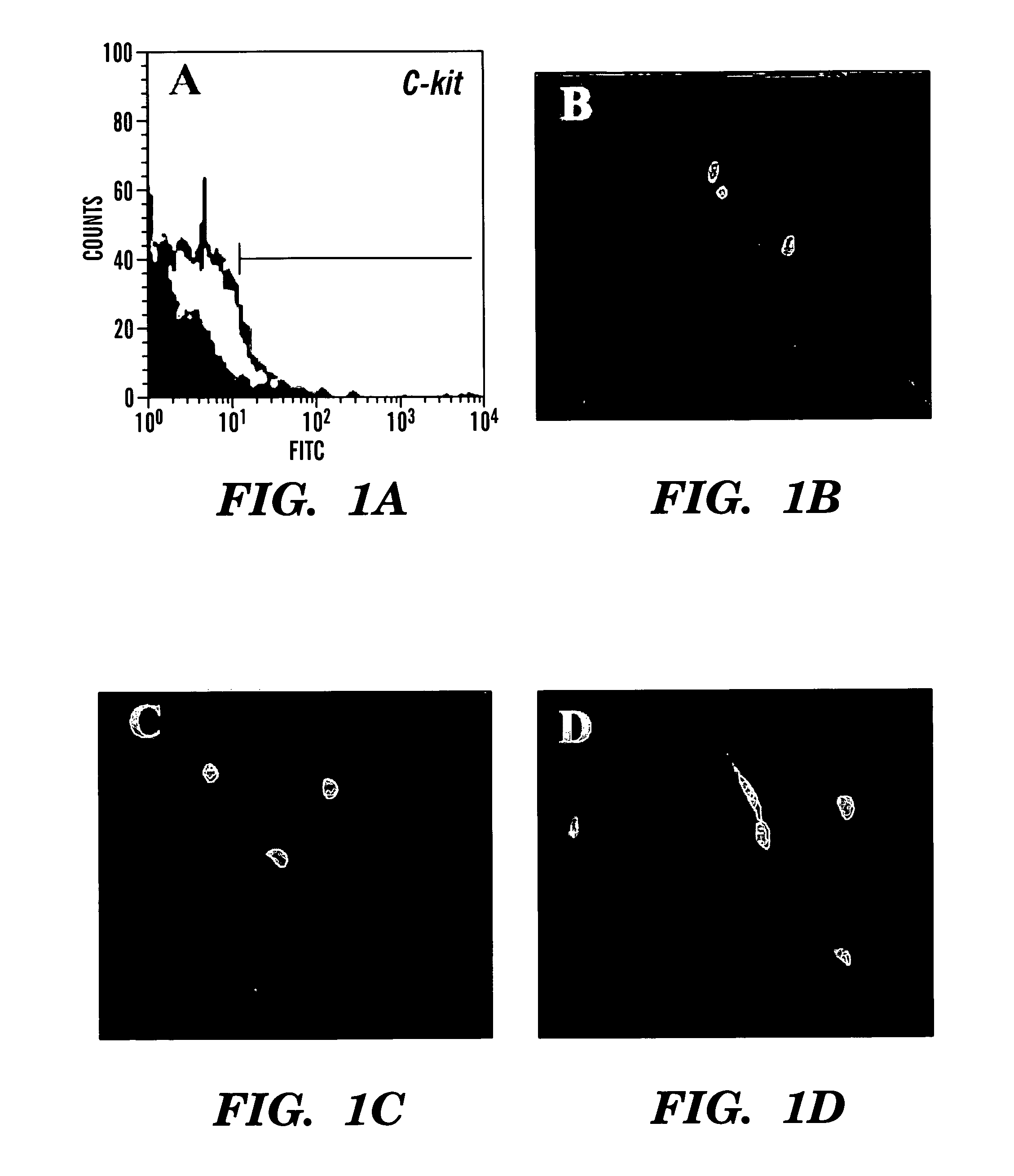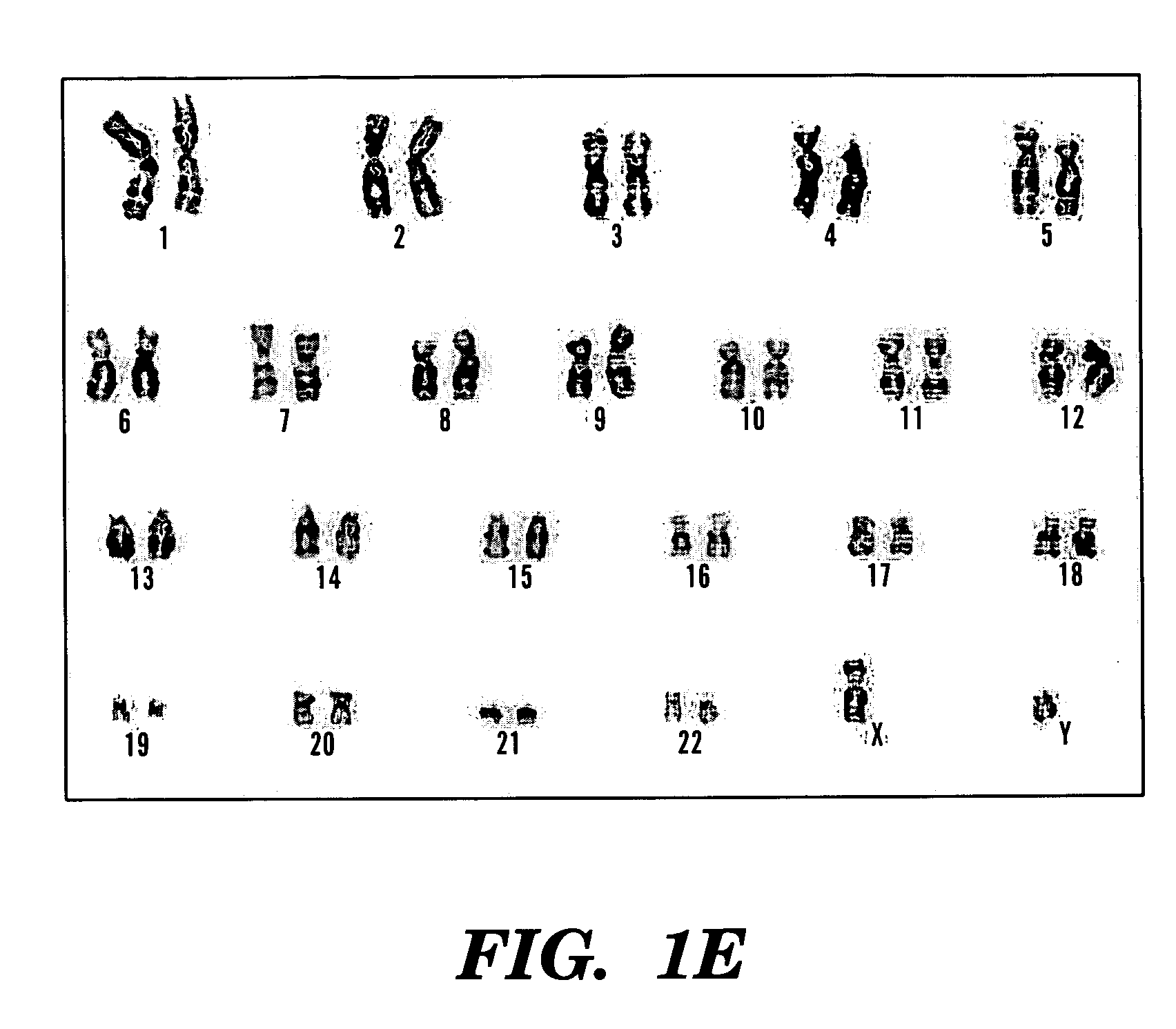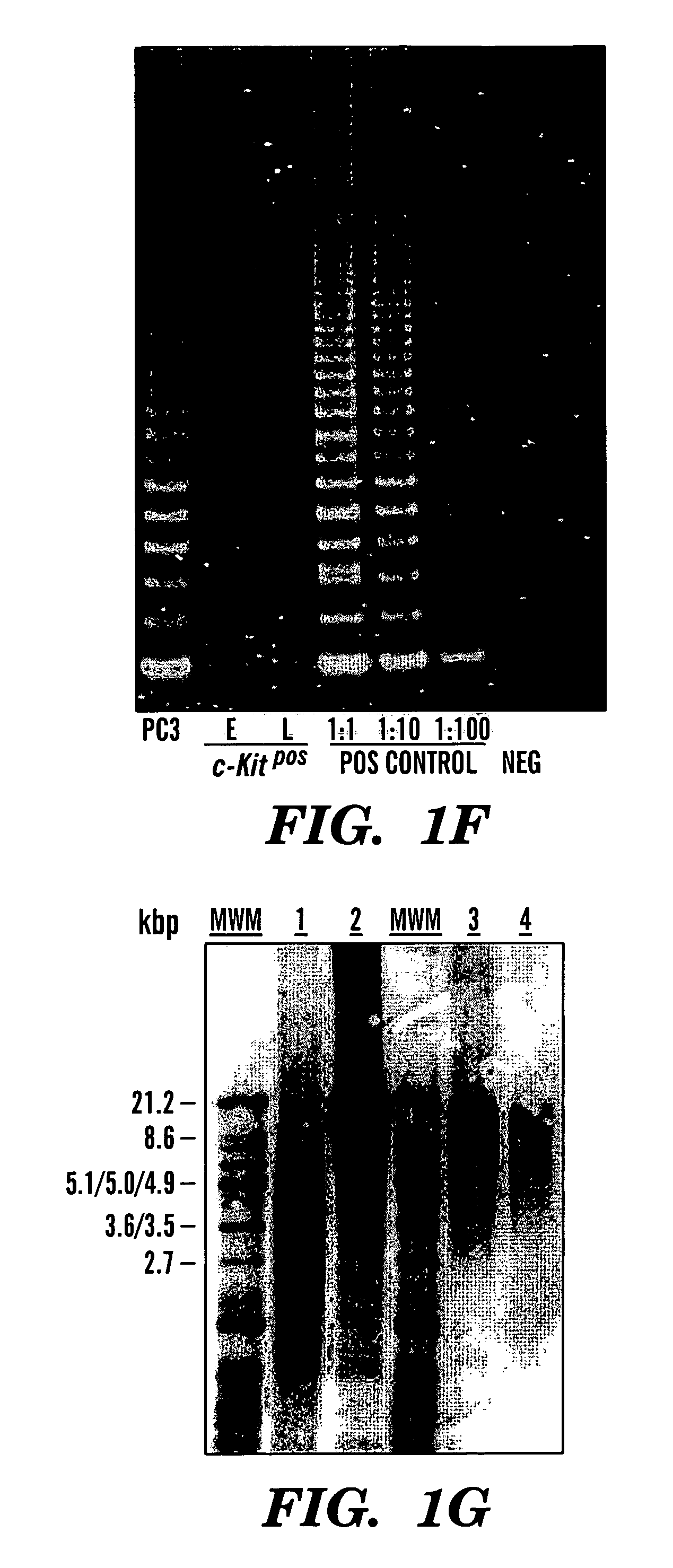Methods of isolation, expansion and differentiation of fetal stem cells from chorionic villus, amniotic fluid, and placenta and therapeutic uses thereof
a technology of amniotic fluid and chorionic villus, which is applied in the field of isolation, expansion and differentiation of fetal stem cells from chorionic villus, amniotic fluid, and placenta and its therapeutic use, can solve the problems of limited cellular regeneration or turnover, adult stem cells have the disadvantage of not being immortal, and most of them lose their pluripotency, so as to achieve excellent pluripotent fetal stem cells and improve the potential expansion
- Summary
- Abstract
- Description
- Claims
- Application Information
AI Technical Summary
Benefits of technology
Problems solved by technology
Method used
Image
Examples
examples
[0095]In this example the feasibility of isolating stem cells from human embryonic and fetal chorionic villi and amniotic fluid was investigated. Discarded cultures of chorionic villi cells and human amniotic fluid cells collected for prenatal diagnostic tests were obtained from more than 300 human pregnant females ranging from 23 to 42 years of age under an approved institutional Investigation Review Board protocol.
[0096]To establish the cultures, human amniotic fluid was obtained by transabdominal amniocentesis at 14 to 21 weeks of gestation, and human embryonic chorionic villus tissue specimens were obtained at 10 to 12 weeks of gestation through a transabdominal approach.
[0097]Amniotic fluid samples were centrifuged and the cell supernatant was resuspended in culture medium. Approximately 104 cells were seeded on 22×22 mm cover slips. Cultures were grown to confluence for about 3 to 4 weeks in 5% CO2 at 37° C. Fresh medium was applied after five days of culture and every third d...
PUM
 Login to View More
Login to View More Abstract
Description
Claims
Application Information
 Login to View More
Login to View More - R&D
- Intellectual Property
- Life Sciences
- Materials
- Tech Scout
- Unparalleled Data Quality
- Higher Quality Content
- 60% Fewer Hallucinations
Browse by: Latest US Patents, China's latest patents, Technical Efficacy Thesaurus, Application Domain, Technology Topic, Popular Technical Reports.
© 2025 PatSnap. All rights reserved.Legal|Privacy policy|Modern Slavery Act Transparency Statement|Sitemap|About US| Contact US: help@patsnap.com



